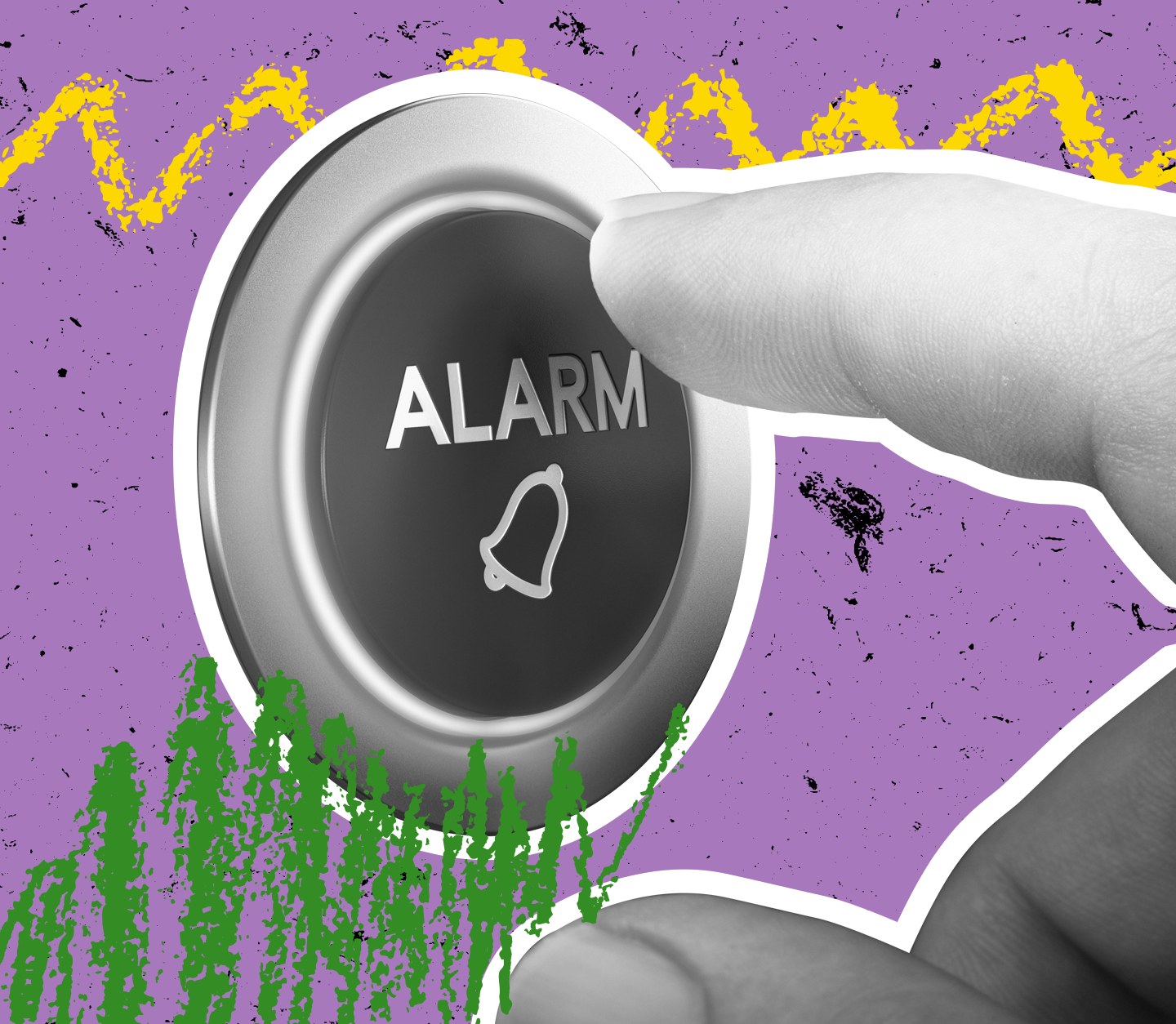Each year, thousands of students across the U.S. experience rape or sexual assault—often in the very spaces meant to support their safety and success.
Sexual violence can happen anywhere—but college campuses present unique dynamics that can increase risk. From the early months of freshman year to social events and off-campus housing, students often face unfamiliar environments and shifting boundaries.
If you or someone you know has experienced sexual assault, you are not alone. RAINN’s National Sexual Assault Hotline offers free, confidential, 24/7 support in English and en Español.
13%
On college campuses 13% of all students experience rape or sexual assault, with rates even higher for undergraduate women (26.4%) and students with nonconforming social identities (21%). 1David Cantor, Bonnie Fisher, Susan Chibnall, Reanna Townsend, et. al. Association of American Universities (AAU), Report on the AAU Campus Climate Survey on Sexual Assault and Sexual Misconduct (September 21, 2015).
9.7%
9.7% of female and 2.5% of male graduate and professional students experience rape or sexual assault involving physical force, violence, or incapacitation.
26.4%
26.4% of female and 6.8% of male undergraduate students experience rape or sexual assault involving physical force, violence, or incapacitation.
5.8% of students have experienced stalking.
Since entering college, 5.8% of students have experienced stalking. 1David Cantor, Bonnie Fisher, Susan Chibnall, Reanna Townsend, et. al. Association of American Universities (AAU), Report on the AAU Campus Climate Survey on Sexual Assault and Sexual Misconduct (September 21, 2015).
See More Facts & StatisticsCollege-Age Women Face the Highest Risk
Women ages 18-24 are at an elevated risk of sexual violence—on-campus and off, student and non-student alike.
18-24 Female College Students are at 3X the Risk
Women ages 18-24 who are college students are 3 times more likely than women in general to experience sexual violence. 1Department of Justice, Office of Justice Programs, Bureau of Justice Statistics, Rape and Sexual Victimization Among College-Aged Females, 1995-2013 (2014).
See More Facts & StatisticsAll College-Age Adults Face Increased Risk
Student or not, college-age adults are at high risk for sexual violence.
Male college-aged students (18-24) are 78% more likely
than non-students of the same age to be a victim of rape or sexual assault. 1Department of Justice, Office of Justice Programs, Bureau of Justice Statistics, Rape and Sexual Victimization Among College-Aged Females, 1995-2013 (2014).
See More Facts & StatisticsFemale college-aged students (18-24) are 20% less likely
than non-students of the same age to be a victim of rape or sexual assault. 1Department of Justice, Office of Justice Programs, Bureau of Justice Statistics, Rape and Sexual Victimization Among College-Aged Females, 1995-2013 (2014).
See More Facts & StatisticsLearn Campus Safety Strategies
Students deserve to feel safe on campus. Learn how to recognize risks, set boundaries, and take steps that support your safety and well-being.

Crime on Campus
Sexual violence is more prevalent at college than other crimes, such as robbery.
2X more likely to be sexually assaulted than robbed.
Female students experience 2 sexual assaults for every 1 robbery. 1National Crime Victimization Survey, 1995-2013 (2015)
See More Facts & StatisticsReporting by College-Age Victims
College-age victims of sexual violence rarely report to law enforcement.
Among Female Non-Students Ages 18-24
4 out of 5
4 Out of 5 students do not report the sexual violence they experienced to law enforcement. 1Department of Justice, Office of Justice Programs, Bureau of Justice Statistics, Rape and Sexual Victimization Among College-Aged Females, 1995-2013 (2014).
Only 20%
Only 20% of students reported the sexual violence they experienced to law enforcement. 2Department of Justice, Office of Justice Programs, Bureau of Justice Statistics, Rape and Sexual Victimization Among College-Aged Females, 1995-2013 (2014).
1 in 5
About 1 in 5 college-aged female survivors received assistance from a victim services agency. 3David Cantor, Bonnie Fisher, Susan Chibnall, Reanna Townsend, et. al. Association of American Universities (AAU), Report on the AAU Campus Climate Survey on Sexual Assault and Sexual Misconduct (September 21, 2015).
Students cited these reasons for not reporting:
26% Believed it was a personal matter
20% Had a fear of reprisal
12% Believed it was not important enough to report
10% Did not want the perpetrator to get in trouble
9% Believe police would not or could not do anything to help
4% Reported, but not to police
31% Other reasons 1Department of Justice, Office of Justice Programs, Bureau of Justice Statistics, Rape and Sexual Victimization Among College-Aged Females, 1995-2013 (2014).
Among Female Non-Students Ages 18-24
2 out 3 female non-students ages 18-24 did not report
2 out 3 female non-students ages 18-24 did not report the sexual violence they experienced to law enforcement.
See More Facts & Statistics
Only 32% reported the sexual violence they experienced
Only 32% of female non-students, ages 18-24, reported the sexual violence they experienced to law enforcement. 1Department of Justice, Office of Justice Programs, Bureau of Justice Statistics, Rape and Sexual Victimization Among College-Aged Females, 1995-2013 (2014).
See More Facts & Statistics
Non-students cited these reasons for not reporting:
5% reported—but not to police
10% believed police would not or could not do anything to help
14% did not want the perpetrator to get in trouble
19% believed it was not important enough to report
20% had a fear of reprisal
23% believed it was a personal matter
35% cited other reasons for not reporting 1Department of Justice, Office of Justice Programs, Bureau of Justice Statistics, Rape and Sexual Victimization Among College-Aged Females, 1995-2013 (2014). 2NOTE: Because this study allowed victims to cite more than one reason for not reporting to law enforcement, this statistic may not total 100%.

How To Report & What To Expect
Do you want to report to the police that you were sexually abused or assaulted? Learn how to report the crime and what to expect if your case goes to trial.
How Campus Police Can Help
Campus law enforcement officers can play a significant role in addressing and responding to college sexual assault.
75% of 4-year schools employ armed officers
Among 4-year academic institutions with 2,500 students or more, 75% employ armed officers, a 10% increase in the last decade. 1Department of Justice, Office of Justice Programs, Bureau of Justice Statistics, Campus Law Enforcement, 2011-2012 (2015).
See More Facts & Statistics86% of campus law enforcement can make an arrest off campus.
86% of sworn campus law enforcement officials have the legal authority to make an arrest outside of the campus grounds. 1Department of Justice, Office of Justice Programs, Bureau of Justice Statistics, Campus Law Enforcement, 2011-2012 (2015).
See More Facts & Statistics70% of campus police have agreements with local police.
70% of campus law enforcement agencies have memorandums of understanding (MOUs) with local law enforcement. 1Department of Justice, Office of Justice Programs, Bureau of Justice Statistics, Campus Law Enforcement, 2011-2012 (2015).
See More Facts & Statistics86% have staff responsible rape prevention programming.
86% of sworn campus law enforcement agencies have a staff member responsible for rape prevention programming. 1Department of Justice, Office of Justice Programs, Bureau of Justice Statistics, Campus Law Enforcement, 2011-2012 (2015).
See More Facts & Statistics72% of agencies have staff responsible for survivor response
72% of campus law enforcement agencies have a staff member responsible for survivor response and assistance. 1Department of Justice, Office of Justice Programs, Bureau of Justice Statistics, Campus Law Enforcement, 2011-2012 (2015).
See More Facts & StatisticsSee more statistics:
Understanding RAINN’s Statistics
RAINN presents this data for educational purposes only and strongly recommends using the citations to review sources for more information and detail.
Join Our Community
Join the Fight for a World Free from Sexual Violence
Sign up for inspiring stories, important updates from RAINN, and tools to take action in your community.

